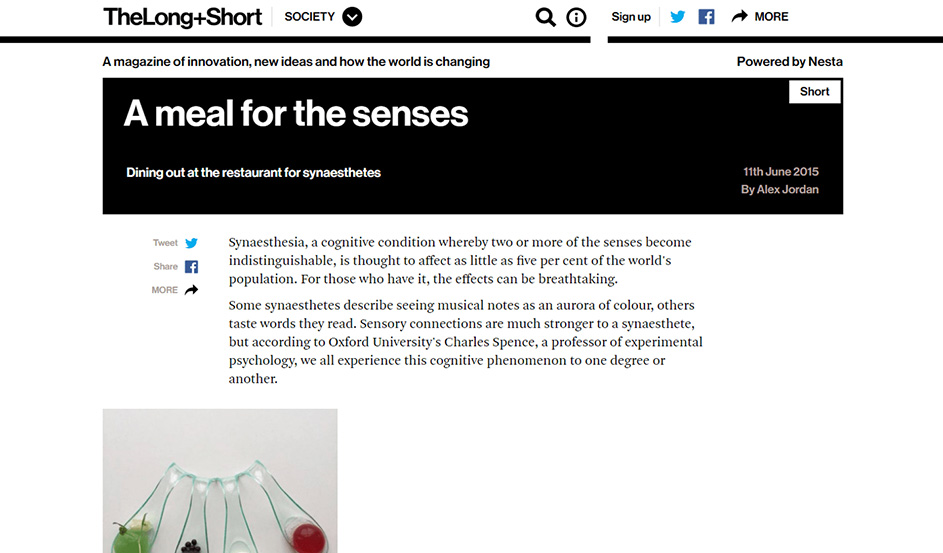
THE LONG+SHORT – “A MEAL FOR THE SENSES – DINING OUT AT THE RESTAURANT FOR SYNAESTHETES”
A MEAL FOR THE SENSES – DINING OUT AT THE RESTAURANT FOR SYNAESTHETES
11th June 2015
By Alex Jordan
Synaesthesia, a cognitive condition whereby two or more of the senses become indistinguishable, is thought to affect as little as five per cent of the world’s population. For those who have it, the effects can be breathtaking.
Some synaesthetes describe seeing musical notes as an aurora of colour, others taste words they read. Sensory connections are much stronger to a synaesthete, but according to Oxford University’s Charles Spence, a professor of experimental psychology, we all experience this cognitive phenomenon to one degree or another.
“Are lemons fast or slow?” he asks with a wry smile as we meet for the launch of Synaesthesia, a dining experience that stimulates the senses through synaesthetic pairings. “The answer is fast, of course, and this is a simple case of how many of us synaesthetically mix taste with speed.”
This phenomenon of incongruous sensory connections (known as crossmodal plasticity), although little understood, is used to explain why many of us think of some foods as fast or slow, or why colours have different weights, for example red being heavier than yellow.
As head of Oxford’s Crossmodal Research Laboratory, a centre that specialises in multi-sensory food perception and the secret weapon of brands like Häagen-Dazs and British Airways, Spence knows a few things about what makes a great dish. Along with experimental chef and founder of Kitchen Theory, Jozef Youssef, the pair have created a five course menu built around this surprising mix of the senses.

